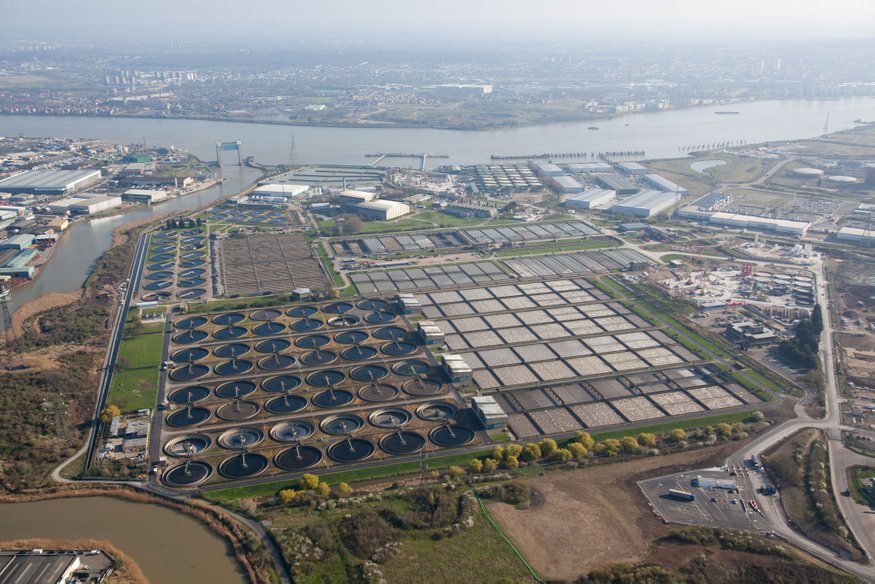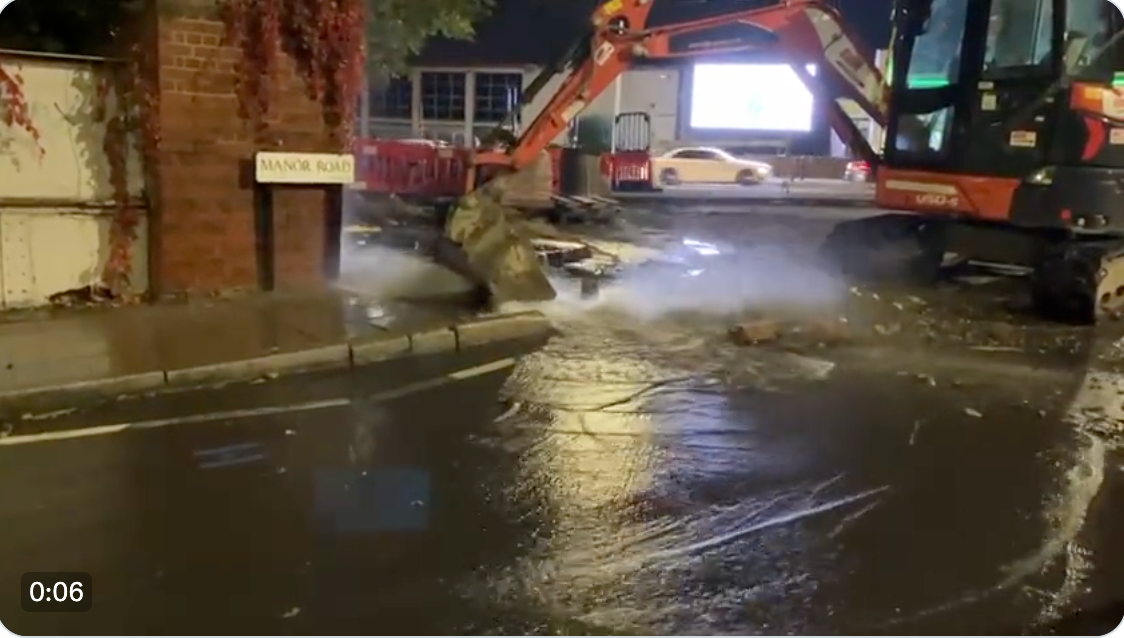Drought resilience is needed
Are there alternatives to the Teddington Direct River Abstraction Scheme? Yes.
Thames Water claim to have reviewed 2,400 alternative proposals before choosing the TDRA scheme.
Water Resources South East (WRSE) — a group of six water companies, including Thames Water, that covers South East England — used a scoring system which selected TDRA as a “best value” scheme.
Best value for whom? And how is this calculated? WSRE and Thames Water are refusing to show the details of what scores they have allocated to schemes, how they’ve worked the scores out, and what weighting they have given to each measure. We have requested this information.
From our very first meeting we have asked Thames Water to show their calculations that led to this being the 'best value' solution for drought-resilience.
Despite numerous promises, 2 years on and we are yet to see any evidence.
For example, Thames Water published the scope of its environmental impact assessment in November 2024 with little feedback from key stakeholders.
Thames Water has also done no work on the social and health impact of using a high public use area such as is proposed for TDRA. How can a scheme like TDRA be quantified as best value without these factors being considered?
Thames Water must commit to more transparency in a scheme that profoundly impacts our community and our shared resources.
Potential alternatives to Thames Water's TDRA
We accept the need to deal with long term challenges of water supply and drought resilience. Our key point is that there are much better alternatives, and we list some of them below.
TDRA is poor value for money, has no convincing validation through the best value model, sets an environmental low and destructive bar, is a non resilient and non scalable asset, has operational risks that simply are not worth taking, is based on flawed and outdated customer research and shows a lack of any credible social and health impact assessment. Thames Water’s process has also, crucially, paid lip service to the many better and greener alternatives to solve the challenge identified.
Here are some of those alternatives.
Beckton and Mogden Reuse Plants
New proposals are available, such as Beckton Sewage Treatment Works and the Mogden Sewage Treatmment Works. Although more expensive, Beckton and Mogden would deliver four to six times more water capacity, at a higher quality.
Mogden and Beckton are state-of-the-art water reuse schemes. They are the schemes that any modern water company with a large wastewater base (like Thames Water) should be developing and expanding. They are true "re-use" schemes as they take raw sewage and turn it into water of good enough quality to pump into reservoirs such as the Lee Valley reservoirs.
These reuse schemes are a good alternative to reservoirs, the standard water storage solutions trusted for hundreds of years.
East Suffolk Transfer Agreement
Renegotiate or cancel current water transfer schemes. In particular, there is a scheme that transfers water from London’s Lee Valley Reservoirs to East Suffolk Water, which should be cancelled or at least amended to reduce transfer. This agreement was reached in the 1960s and was not even considered in the 2400 schemes reviewed by Thames Water!
Water Saving by Customers
We believe that Thames Water are underestimating customers and their willingness to adjust behaviours to save water.
If reductions were targeted more ambitiously at 15% (vs current 7%), an additional 125mlpd could be saved — which more than counters the need for TDRA.
It has been proven all over the world that when asked, customers step up to the challenge of reducing their water usage.
We believe with a combination of smart water meters and education alone, consumers can reduce water usage by 15%, which would address the drought resilience mandate.
More Smart Meters
According to Waterwise* 2021 report "Smart water metering and the climate emergency," installing one million smart water meters in the UK each year for the next 15 years could result in saving at least one billion litres of water a day (1,000 Mld) by the mid-2030s and we could reduce the UK's current greenhouse gas emissions by 0.5% (2.1MtCO2e). Smart Meter Readers have proven to reduce consumer usage by 11% on average.
We call on Thames Water to accelerate the adoption of smart meters.
*Waterwise is the leading independent voice in the UK for using water wisely, for the benefit of people and the planet.
Fix Leaks Faster
Today, Thames Water leaks 650mlpd. Every day. This TDRA scheme proposes 75mlpd, a fraction of the water lost through leaking. If Thames Water accelerates its leak prevention programme, then the savings in water losses should eat into the need for TDRA.
In June 2023, a freedom of information report indicated that Thames Water pipe leaks were at their highest level in five years. Thames Water indicated they would be unable to meet their performance targets for leakage fixes.
Run the Beckton Desalination Plant at Capacity
The Beckton Desalinisation Plant was opened in June 2010 and cost tax-payers £250 million. At the time, Thames Water argued strongly that the plant would address London's water scarcity. Visit Acciona's website about this plant describing its "world-first technology."
However, Thames Water admitted in November 2022 that the plant had only been used on three occasions. The plant requires a deal of maintenance, and Thames Water has been unable to run it at capacity.
If it were run at capacity, the plant should produce about 150mlpd.

Refill Aquifers
Groundwater is stored naturally in layers of water-bearing rocks called aquifers. These are large underground layers of rock and other materials like sand and gravel, through which water can flow and be stored. In our region, chalk is the most important aquifer, but other limestones, sandstones and gravels also have a significant role. (Source: Thames Water.)
The level to which aquifers fill and are saturated varies during the year and from year to year. This groundwater level is known as the water table. If there’s not enough rainfall in winter then the aquifers are not refilled and the water table remains lower in the aquifer. (Source: Thames Water.)
Aquifer refilling is a proven method by Thames Water, but they are ignoring this opportunity to support nature and provide extra water for use.
Reduce Contingency Levels
In their current plan for the London Water Zone, Thames Water plans to have about 30% of its water available for use as a “buffer” to account for leaks, “headroom” and “an outage allowance”. No business should be running with 30% spare like this. Thames Water should operate more efficiently.
Better utilisation of reservoir assets
For example, reservoir capacity such as at Queen Mary, where Thames Water has confirmed this surplus capacity has not been included in their water modelling.
A new London reservoir in the east
How can London increase in population and not have an additional reservoir in the east? Reservoirs have proven over decades to be a simple, durable, reliable supply asset. Thames Water’s view that “we can't find the space” is weak and non-strategic.
Larger abstraction from existing points or from other water based schemes
Seething Wells as a very local example for Teddington, or through innovative thinking with the River Thames scheme which is seeking to deal with excess water in the wet months.
Cotswold canal transfer
A sensible proposal that moves water from where they have far less constraints to an area like London that has needs - a real strategic long term solution based on the reality of rainfall volumes over decades
Conclusion
TDRA is poor value for money, has no convincing validation through the best value model, sets an environmental low and destructive bar, is a non resilient and non scalable asset, has operational risks that simply are not worth taking, is based on flawed and outdated customer research and shows a lack of any credible social and health impact assessment.
Since the initial 'Best Value' appraisal was carried out there have been significant changes to the TDRA proposals yet there has been no commitment to revisit the best value calculations.
Thames Water’s process has paid lip service to the many better and greener alternatives to solve the challenge identified.
You can rightly ask why if this is so bad is Thames Water pursuing it ? We too have scratched our heads over this one. Our only conclusion is because it offers access to enhancement funding as a new asset and that means their regulatory assets go up and they can justify increased borrowing and charging the customer more.
Thames Water is completely locked into a way of thinking that does not serve customers and the environment best. TDRA is a prime example of a failure to think sensibly about how water supply should work for the future. Rather than mandate a scheme that gives permission for treated effluent to be discharged into the river for years to come, we need better and more sustainable solutions. TDRA needs to be stopped and we ask you to do that when reflecting on WRMP 24 that is before you.

